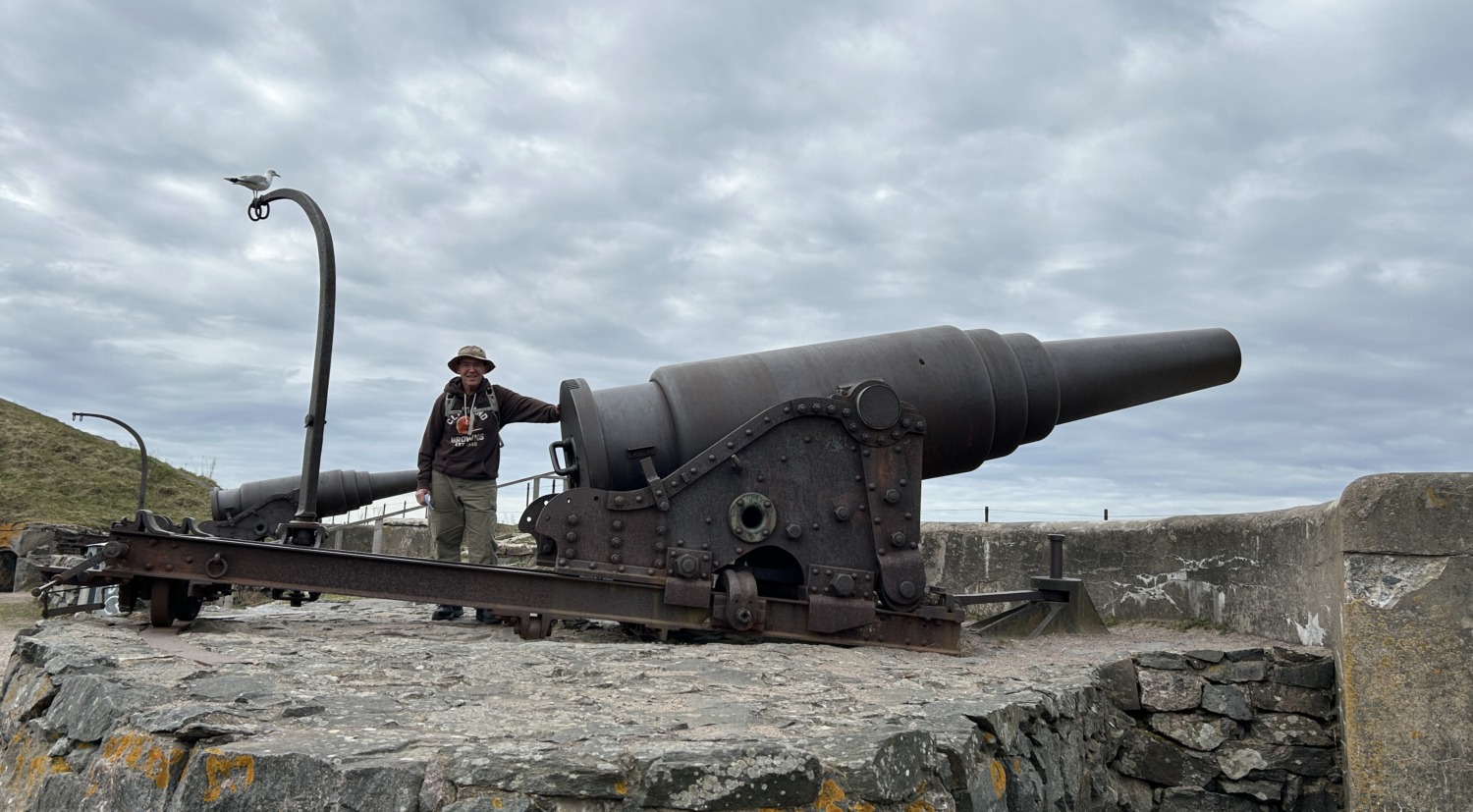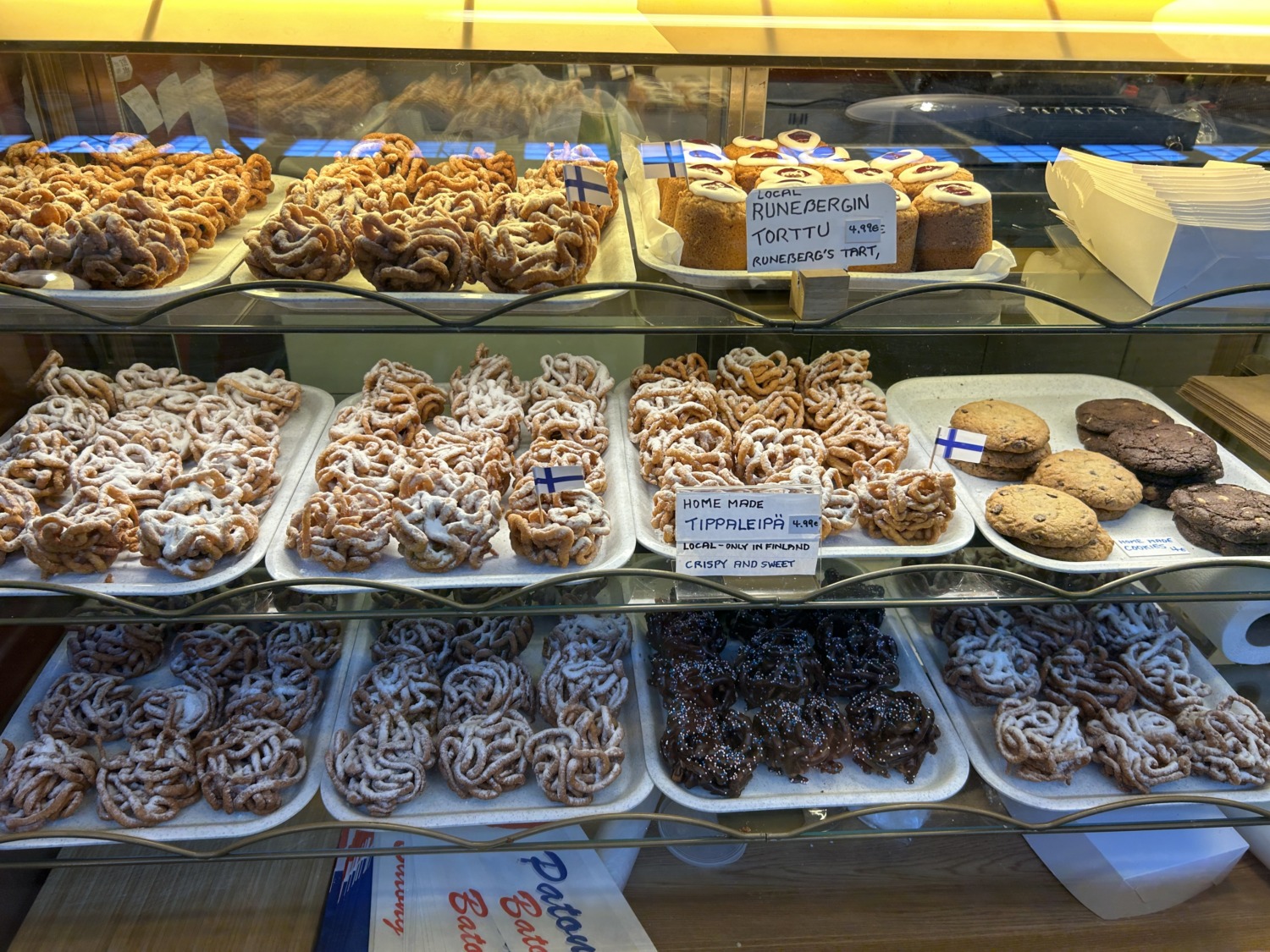We only had one day in Helsinki so we had to be selective. We decided to focus on the Suomenlinna Fortress. Nothing in Helsinki is really old, like in Tallinn or Oslo. In fact, Helsinki didn’t move from being a very small town to a city until after 1812. Finland was annexed to Russia and Emperor Alexander I moved the capital of Finland to Helsinki so it would be closer to St. Petersburg. So the oldest buildings in the city date from that time period.

Suomenlinna Fortress predates the city of Helsinki. The Swedes, who controlled Finland at the time, started building the fortress in 1748. Field Marshal Augustin Ehrensvärd designed and supervised the building of the Fortress and he is buried in the center of it. Suomenlinna Fortress is built on six islands with bridges connecting them. Most of the area is fortified with different buildings inside the walls.

In 1808, Suomenlinna was besieged by Russian forces in the Russo-Swedish war. After just minor skirmishes and with superior numbers on his side, Commandant C.O. Cronstedt decided to surrender. The reasons for surrender remains an unsolved mystery. The surrendered sea fortress was taken over by the Russians, who occupied it and annexed Finland.

The Russians valued the fortress and made big plans for it. The fortress perimeter was expanded to Santahamina, Kuningassaari and Vallisaari islands. Barracks to house soldiers were built in the fortress. An Orthodox garrison church was completed. The Crimean War led to a battle between the fortress and the Anglo-French fleet. The fortress was heavily damaged but it was repaired by the Russians after the war.
During the First World War (1914–1918), Suomenlinna formed part of what was known as the Naval Fortress of Peter the Great, designed to protect the Russian capital St. Petersburg. With the Russian Revolution and Finland’s independence in 1918, Suomenlinna was taken over by the newly founded Finnish government and given its current name, which means “Castle of Finland”. Today the fortress is a UNESCO World Heritage Site.
Tom and I got to Suomenlinna Fortress in stages. We started out in a shuttle bus that took us to the City Market. Then we got on a ferry that took us to Suomenlinna. Once on the island, we walked. At first we were a little frustrated because the Visitors Center sign said it opened at 12:30, when the website said 10. Then the museum sign said it opened at 10:30 when, again, the website had said 10. The church wasn’t open at all and a living history section was opening the day after we visited.
But the fortress is largely an open space to walk and explore on your own. Tom and I decided to walk to the end of the fortress and then work our way back to see the buildings that were closed when we first got there. The walk was interesting and impressive. We saw the stone walls and bastions. Tom got up close and personal with the cannons which still line the walls. Most of the former barracks are now private homes, so we couldn’t go in them.
By the time we finished exploring the southern part of the island, the museum was open. That was really interesting because it explained a lot of what we had seen. There was a movie that gave the history of Suomenlinna Fortress. It was in Finnish, but there were headsets that we could tune to a station that played English narration.
The museum exhibits continued to show the historical significance of the fortress. One particularly interesting exhibit was on mapping Finland through the years. Another exhibit talked about the restoration of Suomenlinna. When you have something that has been renovated through the years, to what year do you restore it? The Swedish era? The Russian era? In the end they modernized the buildings that housed people and restaurants, but restored the exteriors to their Russian appearance. Except for the church, which was kept as a Lutheran building.
We caught the ferry back to Helsinki and got some traditional Finnish bratwurst at an open air market at the dock. We asked the woman who ran the stall what the Finnish word for bratwurst was, and she said “bratwurst.” Okay.
Tom and I walked along the squares and esplanades of the city center. There is lots of shopping and plenty of restaurants. A lot of people were out and about enjoying a really nice afternoon. We checked out the City Market which had stalls with food vendors. Several stalls had reindeer meat. We decided to try some Tippaleipa, which is a traditional Finnish treat. It looked like a funnel cake but was crispy.
We got one covered in chocolate, so it tasted like a chocolate covered pretzel without the salt. Delicious! The person who ran the stall asked us if we were going to eat it at home or now. We said “Now!” and she gave us several paper towels. The chocolate melted all over our fingers, which only made it better. Warm chocolate to lick after the rest is gone.
Once we finished the Tippaleipa, it was time to climb on the shuttle and head back to the ship. We had a wonderful day in Helsinki. The people were friendly and helpful everywhere we went. And they all spoke excellent English.






